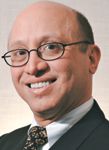- Acne
- Actinic Keratosis
- Aesthetics
- Alopecia
- Atopic Dermatitis
- Buy-and-Bill
- COVID-19
- Case-Based Roundtable
- Chronic Hand Eczema
- Chronic Spontaneous Urticaria
- Drug Watch
- Eczema
- General Dermatology
- Hidradenitis Suppurativa
- Melasma
- NP and PA
- Pediatric Dermatology
- Pigmentary Disorders
- Practice Management
- Precision Medicine and Biologics
- Prurigo Nodularis
- Psoriasis
- Psoriatic Arthritis
- Rare Disease
- Rosacea
- Skin Cancer
- Vitiligo
- Wound Care
Article
How to optimize radiofrequency treatment results
Lake Buena Vista, Fla. - David Goldberg, M.D., says that for prospective cosmetic surgery patients wishing to quickly but effectively tighten facial wrinkles, radiofrequency (RF) rejuvenation - particularly with the ThermaCool ?TC machine developed by Thermage ?, which won federal approval as a full-face treatment last July - may be the way to go.
Lake Buena Vista, Fla. - David Goldberg, M.D., says that for prospective cosmetic surgery patients wishing to quickly but effectively tighten facial wrinkles, radiofrequency (RF) rejuvenation - particularly with the ThermaCool™ TC machine developed by Thermage®, which won federal approval as a full-face treatment last July - may be the way to go.

"First, the device provides primary skin tightening with a single treatment and with no epidermal loss," he says. "In addition, the ThermaCool ™ device can be used either as a primary non-ablative device, or it can be used as skin-tightening technology in conjunction with other non-ablative devices."
Not a laser treatment "What's important to know about this procedure is that it is not a laser treatment," Dr. Goldberg says, "and that previous non-ablative techniques do not provide any tissue tightening at all. Non-ablative radiofrequency with this device does provide skin tightening in the treated areas. That's the major point of difference."
Dr. Goldberg points out other differences between laser and RF non-ablative treatment.
"With laser non-ablative treatment, photons of light are used, there is absorption by a specific chromophore, and this absorption leads to heat formation," he says. "With RF non-ablative treatment, there are no photons of light, the heating is non-specific in terms of chromophores, and heat is based on tissue resistance of electron movement, or Ohm's law."
Dr. Goldberg says this difference yields a major benefit to the makeup of the prospective patient population: Because the heating is non-specific with the ThermaCool™ device, the patient's skin pigmentation is irrelevant. Therefore, the procedure is appropriate - and effective - for a much wider variety of ethnicities than are treatments with most lasers.
Not a substitute for surgery "Treatment with the ThermaCool ™ RF device does have its unique points. It is, for instance, the only non-invasive device that tightens tissue," Dr. Goldberg says. "However, remember that it is not a substitute for browlift or facelift surgery. It does not work quite as well as those procedures, and the changes it produces are more subtle. But again, the ThermaCool™ procedure is non-invasive, so recovery time is virtually nil when compared with recovery time for surgical procedures."
Dr. Goldberg cites results of U.S. Food and Drug Administration trial studies done in 2002 by himself and several dermatologist colleagues on non-ablative RF technology used to lift the brow. The study focused on 86 patients who were treated for periorbital rhytids by "lifting" the forehead skin with RF treatment. In each case, the patient underwent single treatment of the area above the rhytids or lax skin; in 90 percent of the cases, pain was managed with topical ELA-Max (now known as LMX4, Ferndale Laboratories), while only 10 percent required additional brow-nerve blocks.
"Of the total of 124 treated eyes, 74 percent of right eye and 84 percent of left eye areas showed improvement four months after treatment," Dr. Goldberg says. "After six months, 85 percent of right eye and 80 percent of left eye areas improved."
Newsletter
Like what you’re reading? Subscribe to Dermatology Times for weekly updates on therapies, innovations, and real-world practice tips.














